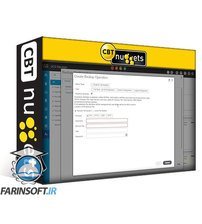جمع جزء: 417,000 تومان
- × 1 عدد: آشنایی با ارزشهای ارتباطی و کسب مهارت های لازم در زمینه آن ها - 139,000 تومان
- × 1 عدد: Deploying IS-IS on Juniper Routers - 139,000 تومان
- × 1 عدد: آموزش تست برنامه های وب به کمک Selenium WebDriver در زبان Java - 139,000 تومان




-main-resized.jpg)





--Differentiate-Between-Switching-Mechanisms-main-resized.jpg)


